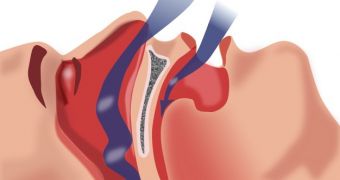People suffering from obstructive sleep apnea (OSA), have more non-calcified plaque in their coronary arteries and they risk having a heart attack or another cardiovascular event, according to a new study.
OSA is associated with obesity, and non-calcified plaque is considered a bad plaque, as it can rupture easily and cause a blood clot, that can lead to cardiovascular problems.
U. Joseph Schoepf, MD, professor of radiology and medicine and director of cardiovascular imaging at the Medical University of South Carolina in Charleston, said that the “study reveals that individuals with obstructive sleep apnea are prone to developing an aggressive form of atherosclerosis that puts them at risk for impaired blood flow and cardiovascular events.”
At this experiment took part 49 obese patients, 61 years old on average, with OSA and a BMI of 33, and 46 obese patients without the sleep disorder, 60 years old on average and with a mean BMI of 30.
They underwent coronary CT angiography (cCTA) – a method that gives specific information and images on plaque buildup and narrowing in the vessels.
In the OSA group, there were 26 men and 23 women, while the matched control group included 22 men and 24 women.
The cCTA revealed that both groups had similar amount of calcified plaque in the coronary arteries, but the general composition of vessel plaque was considerably different.
Dr. Schoepf said that “compared to the non-OSA group, the patients with OSA had a significantly higher prevalence of non-calcified and mixed plaque.”
OSA is caused by a blockage of the upper airway during sleep, and people suffering from it have periodic pauses in breathing, that can last for 10 or more seconds, and usually snore.
OSA patients part of the study, had more narrowed vessels and more extensive vessel involvement – 88% of them had narrowing in at least one blood vessel, unlike only 59% of non-OSA patients.
More concerning, one third of OSA patients had narrowing in four blood vessels.
“Coronary CT angiography is an effective way to noninvasively diagnose non-calcified and mixed plaque,” explained Dr. Schoepf.
“With technological advancements that are lowering the radiation dose required for cCTA, this exam could become a screening tool for obese individuals at increased risk for cardiovascular disease.”
According to data from the National Heart, Lung and Blood Institute, millions of Americans have OSA, and nearly half of them are overweight.
This new study was presented today at the annual meeting of the Radiological Society of North America (RSNA).

 14 DAY TRIAL //
14 DAY TRIAL //